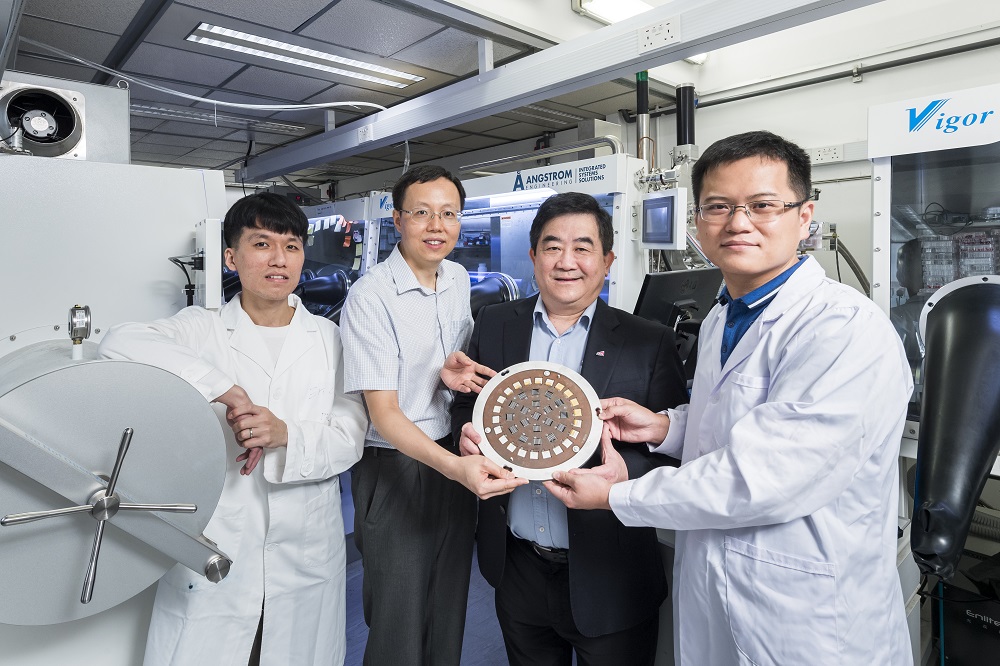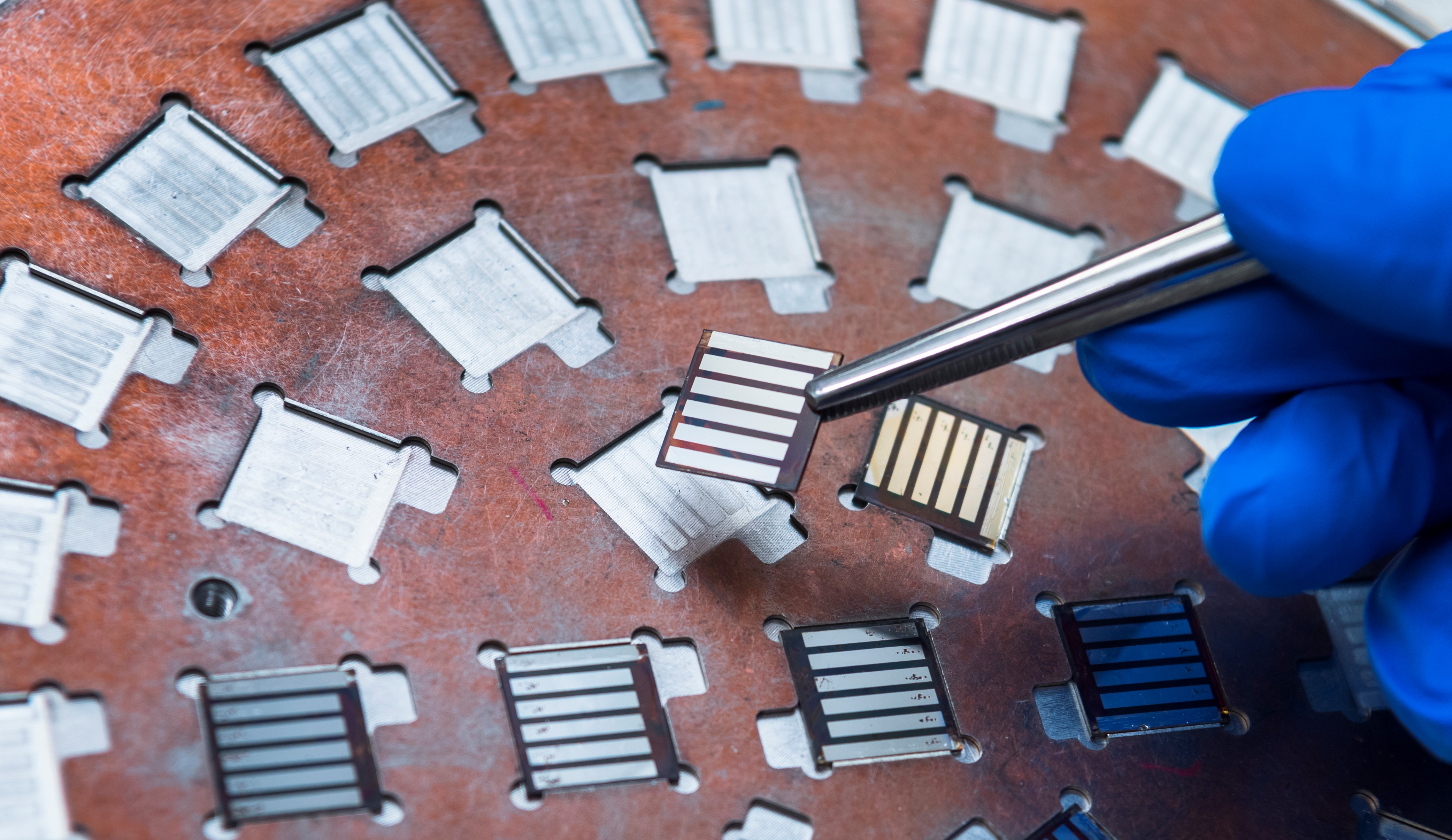More Stable and Environmentally Friendly Solar Cells
Solar energy is the fastest-growing electricity source. But the commonly used silicon-based solar cells are close to their theoretical maximum efficiency and cost-reduction limit. At CityU, Professor Alex Jen Kwan-yue, Lee Shau-Kee Chair Professor of Materials Science, has been working on developing more stable and environmental friendly perovskite and organic solar cells, which are believed to offer more promising and diverse applications to replace silicon as the future of photovoltaic technology.
Hybrid perovskites are a class of new materials that display many exciting properties, such as remarkable efficiency in absorbing light and converting it into electric currents in photovoltaic solar cells. They have become a buzzword in the field of solar cells.
Printable solar cells
As a leading expert and highly cited scholar in the field of perovskite and solar cell research, Professor Jen pointed out that research on perovskite solar cells started just about a decade ago, but their power conversion efficiency has greatly improved from 3.8% to 25.5%, rivalling that of their silicon-based counterparts, which were developed more than 50 years ago.
Perovskites are efficient and can be made via low cost solution processing. They can be made inexpensively from solutions. “Like the ink used in newspaper printing, the solution can be ‘printed’ on plastic films as flexible solar cells, or it can be coated on a window, looking like tinted glass but generating power,” said Professor Jen. “The application potential is huge.”
But the problems of instability and potential environmental impact of perovskite solar cells have yet to be overcome. One of the main concerns is the potential environmental contamination from the lead-containing component of perovskites. “As solar cells age, the lead component can potentially leak from the cells and leach into the soil through rainwater, for example,” he explained.
Together with Professor Xu Zhengtao and Dr Zhu Zonglong, from the Department of Chemistry, Professor Jen led the team to overcome these challenges by applying two-dimensional (2D) metal-organic frameworks (MOFs) to perovskite solar cells.

Protective layer mitigates lead leakage
The MOF layer is a multi-functional honeycomb-like structure. It has semiconducting properties and can “capture” heavy metal ions to form water-insoluble complexes, mitigating lead leakage. It can also act as a protective layer against moisture and oxygen, while maintaining high efficiency. Both the power conversion efficiency (over 22%) and the open-circuit voltage recorded were among the highest values reported for planar inverted perovskite solar cells.
Moreover, the MOF layer provides superior long-term operational stability. The device retains 92% of its initial efficiency after operating for 1,000 hours under continuous light irradiation at 85°C, meeting the commercialisation standard set by the International Electrotechnical Commission (IEC).
“Our findings offer an integrated solution to address both the stability and environmental issues, the two main hurdles before large-scale applications of perovskite solar cells,” said Professor Jen. The team is working to further enhance the power conversion efficiency and explore ways to lower the production cost.
Highest efficiency organic solar cell
Professor Jen and Dr Zhu have also designed various organic, inorganic and hybrid materials for applications in different types of solar cells and photonic devices. In September 2020, their organic solar cell, developed in collaboration with the University of Washington, was recognised by the National Renewable Energy Laboratory (NREL) in the US, a benchmark testing lab in the renewable energy research field, in its “Best Research-Cell Efficiency Chart”. Its power conversion efficiency of 17.5%, certified by NREL, was the highest among organic solar cells at that time.

Though the power conversion efficiency of organic solar cells is not as high as that of perovskite solar cells, Professor Jen pointed out that the production process for organic solar cells is even more environmentally friendly and consumes less energy than that for perovskite solar cells. The semi-transparent organic solar cells can also be applied to building-integrated photovoltaics, the glass roof panels of greenhouses and other buildings, enabling power self-sufficiency. And the foldable flexibility of organic solar cells definitely has huge potential for applications in new-generation wearable electronic devices.
“Solar energy is no longer limited to bulky and hard panels on rooftops,” said Professor Jen. “These new materials can be installed everywhere, from coatings on buildings and windows to mobile devices and even clothing, composing an integrated system of sustainable energy.”
This research article originated from CityU RESEARCH.
